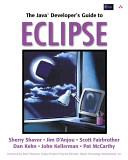Ian is an Eclipse committer and EclipseSource Distinguished Engineer with a passion for developer productivity.
He leads the J2V8 project and has served on several …
This year marks a special milestone for me as it’s my 10 year anniversary with Eclipse. I started using Eclipse in 2003 as a PhD student at IBM. Eclipse was using CVS, PDE/Build and all plug-in dependencies were specified in a plugin.xml (BTW, if you’re still doing this, STOP!). There was no Eclipse Foundation and Eclipse 2.x was the latest and greatest! The first project I ever got involved with was GEF (I found my first ever interaction with the Eclipse community) and it was encouragement from that project that brought me deep into the Eclipse community.
 I wrote my first Eclipse Top 10 in 2007 with a crying baby on my lap. Now my daughter is riding a bike and playing soccer. And just like I’ve watched my daughter grow, I’ve had the good fortune of watching Eclipse grow too.
I wrote my first Eclipse Top 10 in 2007 with a crying baby on my lap. Now my daughter is riding a bike and playing soccer. And just like I’ve watched my daughter grow, I’ve had the good fortune of watching Eclipse grow too.
While Eclipse is still the gold standard when it comes to IDEs and Universal Tool Platforms, it’s also the gold standard for software engineering processes. Just as it’s done since 2001, Eclipse will ship another release on time – Eclipse Kepler .
To prepare for the release – as I’ve done 5 times before – I’m counting down 10 Eclipse features that I’m most excited about.
Number 10 is a project that I’ve never featured in my Annual Top 10 List before – Eclipse BIRT. The Business Intelligent and Reprting Tool (BIRT) is an open source reporting system that integrates with your Java/Java EE application to produce compelling reports.
BIRT includes a powerful Report Designer, allowing you to integrate data sources, design reports and preview the results.
The results can then be deployed to a number of different runtimes including web containers like Tomcat, Swing based applications or even Eclipse RCP.
In Eclipse Kepler, BIRT has added support for NoSQL datasources such as MongoDB and Apache Cassandra. With this new feature you can discover fields in a NoSQL Database, aggregate these fields and produce powerful DataSets. These DataSets can then be used directly in your reports.
With the number of document based databases on the rise, this is a great example of very mature project growing to meet its user’s needs.
Ian is an Eclipse committer and EclipseSource Distinguished Engineer with a passion for developer productivity.
He leads the J2V8 project and has served on several …